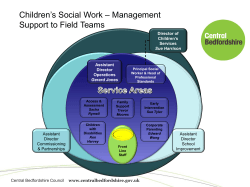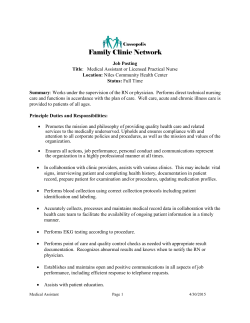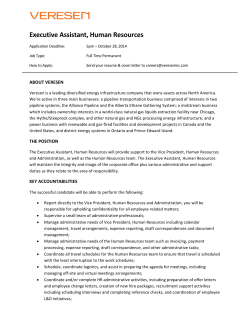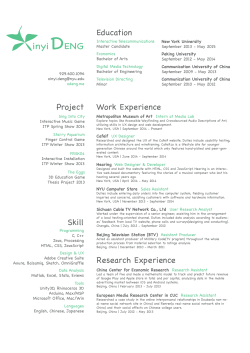
Gerald Glavaz, DHSc, MPAS, PA-C Carol Gorney, MPAS, PA-C Assistant Professor
Gerald Glavaz, DHSc, MPAS, PA-C Assistant Professor Clinical Coordinator Loma Linda University Department of PA Sciences Carol Gorney, MPAS, PA-C Assistant Professor Director of Clinical Education University of Iowa Dept. of Physician Assistant Studies and Services To provide an opportunity for PAEA members to express their opinions on how the Guidelines should be revised. To obtain feedback from key stakeholders on this topic that will be provided to PAEA leadership in order to inform the next version of the Guidelines. To promote greater understanding between programs of ethical issues to be considered when sharing clinical sites. To promote a spirit of collaboration and respect between programs. Utilize the obtained information to discuss the possibility of creating a clinical education committee subcommittee on this topic. Initially developed at Clinical Coordinator retreat in 1988. Approved by APAP Board of Directors and Published in JPAE in 1999. Reprinted in 2001 when issues were raised again at Clinical Coordinator and Program Director retreats. Nicholson J. Voluntary Guidelines for Program Collaboration on Clinical Training Sites. Journal of Physician Assistant Education. 2001;12(2):2001. APAP member programs, through their directors of clinical education or clinical experience coordinators, agree to a spirit of cooperation and collaboration in the use of clinical training sites. Programs recognize the need for clinical coordinatorto-clinical coordinator communication, and the need for all preceptors to be asked by students and/or clinical faculty if they are or have been preceptors for other PA programs. If so, these programs are to be notified of the interest in the training site by the newly interested program. Programs that use a clinical site that has been identified as having been previously used by other programs will follow up with those programs concerning the quality of the experience. Programs and clinical coordinators agree to be sensitive to the issues of preceptor burnout and student quality when collaborating on clinical training sites. Nicholson J. Voluntary Guidelines for Program Collaboration on Clinical Training Sites. Journal of Physician Assistant Education. 2001;12(2):2001. Many medical schools have guidelines for site sharing (ex: Visiting Student Application Service (VSAS) program sponsored by AAMC. AMA recently adopted policy opposing “extraordinary compensation” for clinical training sites that would limit or displace students from other programs. How does your program ensure that your use of shared clinical sites is equitable and collaborative? AMA House of Delegates. AMA resolution 302 - Securing quality education sites for US-accredited schools. In: 2012 Annual Meeting of the AMA. Chicago: American Medical Association; 2012. Original guidelines developed 15 years ago. What is new? increasing PA program enrollments new program development expansion to distant campuses and clinical sites emphasis on interprofessional education technology (regional, state or national scheduling systems) have all increased the likelihood that programs will voluntarily or unknowingly share clinical sites in the future. The development of state-of-the art, practical Guidelines are needed to ensure that fair and equitable partnerships are established between programs. What steps would you like other programs to take, if any, should they have an interest in placing their students at one of your established sites? What steps do you take, if any, when you are aware that a new clinical site is already in use by another program prior to placing your student? What can be done to improve program-toprogram communication and use of the voluntary “Guidelines of Courtesy” when sharing clinical sites? Are there any additional recommendations that you would like to see included in the Guidelines? 35 minutes – Exchange ideas and explore creative and innovative solutions Each group answers questions on sheet provided 10 minutes – Summarization of group findings
© Copyright 2025





















